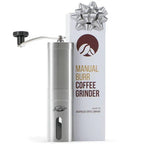The debate between cold brew and iced coffee has been ongoing for quite some time now, with coffee lovers divided on which one reigns supreme. While both are refreshing, cold caffeinated drinks, they have distinct differences in terms of flavor, brewing method, and health benefits. So, let's dive deeper into the cool debate and explore the differences between cold brew and iced coffee.
First, let's understand what exactly cold brew and iced coffee are.
Cold brew is a slow and gentle brewing process that involves steeping coffee grounds in cold or room temperature water for 12-24 hours, resulting in a smooth and less acidic beverage. On the other hand, iced coffee is prepared by brewing hot coffee, allowing it to cool, and then pouring it over ice.
Now, let's look at the key differences between cold brew and iced coffee:
- Brewing Method: As mentioned, cold brew involves steeping coffee grounds in cold water for an extended period, while iced coffee is made by brewing hot coffee and then cooling it down.
- Flavor Profile: Cold brew has a smoother and less acidic taste compared to iced coffee, which can be quite bitter and acidic.
- Caffeine Content: Cold brew tends to have a higher caffeine content as the steeping process extracts more caffeine from the grounds compared to brewing hot coffee.
- Temperature: As the name suggests, cold brew is served cold, while iced coffee can be served hot or cold.
- Serving Style: Cold brew is typically served over ice, while iced coffee can be served with or without ice.
In terms of health benefits, both cold brew and iced coffee have their own advantages:
- Acidity Levels: Cold brew is less acidic than iced coffee, making it a better choice for those with sensitive stomachs.
- Antioxidant Content: Cold brew has a higher antioxidant content as the longer steeping process extracts more antioxidants from the coffee grounds.
- Sugar and Calorie Content: Iced coffee tends to have a higher sugar and calorie content, especially when flavored syrups or creamers are added, making cold brew a healthier option.
Both cold brew and iced coffee can be easily made at home.

To make cold brew, mix coarsely ground coffee and water in a container, let it steep for 12-24 hours, and then strain and serve over ice.
For iced coffee, brew hot coffee, let it cool, and then pour it over ice.
So, which one reigns supreme? It ultimately comes down to personal preference. If you prefer a smooth and less acidic taste, go for cold brew. If you prefer a stronger and more traditional coffee flavor, iced coffee would be the better choice. However, in terms of health benefits, cold brew takes the lead with its lower acidity and higher antioxidant content. Whichever one you choose, both cold brew and iced coffee are delicious and refreshing options for coffee lovers.
Key Takeaways:
What Is Cold Brew?
What Is Cold Brew? Cold brew is a unique coffee brewing method in which coarsely ground coffee is steeped in cold water for an extended period, typically lasting 12 to 24 hours. This process creates a smooth, less acidic coffee concentrate that can be mixed with water or milk. Unlike hot brewing, the slow steeping process extracts different flavors from the coffee beans, resulting in a mellow and less bitter taste.
Read: Ultimate Guide to Cold Brew Coffee
What Is Iced Coffee?
Iced coffee is a delicious and refreshing beverage that is made by cooling down brewed coffee and serving it over ice. It is a popular choice, especially during hot weather, and can be customized with milk, cream, sweeteners, or flavored syrups.
The coffee can be brewed hot and then cooled, or it can be brewed cold over a longer period, resulting in a smooth and chilled coffee drink that is perfect for a summer day.
True story: On a scorching summer afternoon, Maria discovered the joy of iced coffee. As she sipped the cold, invigorating brew at a quaint café, she knew it was love at first sip.
What Are the Differences Between Cold Brew and Iced Coffee?

When it comes to cold coffee drinks, the two most popular choices are cold brew and iced coffee. While both may seem similar at first glance, there are actually distinct differences between the two. In this section, we will break down the differences between cold brew and iced coffee, including their brewing methods, flavor profiles, caffeine content, temperature, and serving styles. By understanding these differences, you can make a more informed decision on which drink reigns supreme for your personal taste preferences.
1. Brewing Method
Brewing method for cold brew dates back to the 1600s in Japan when it was originally known as Kyoto coffee. The method has evolved over the centuries to become the popular cold brewing process used today.
To make cold brew coffee:
- Coarsely grind coffee beans.
- Combine ground coffee and water in a jar.
- Stir the mixture.
- Cover and refrigerate for 12-24 hours.
- Strain the coffee concentrate.
- Dilute the concentrate with water or milk.
2. Flavor Profile
The flavor profile of cold brew is known for its smoothness, with less acidity and subtle hints of sweetness and chocolate. On the other hand, iced coffee tends to have a bolder and more noticeable acidity, resulting in a brighter flavor profile that may resemble that of traditional hot coffee.
3. Caffeine Content
Caffeine content varies between cold brew and iced coffee. Cold brew generally has a higher caffeine concentration due to the extended brewing time, resulting in a strong and robust flavor. In comparison, iced coffee, which is made using hot water, has a milder taste and typically contains less caffeine.
4. Temperature
When discussing cold brew and iced coffee, the temperature plays a crucial role. Cold brew is made with cold water, extracting flavors slowly, resulting in a smooth, mellow taste. In contrast, iced coffee is brewed hot and then cooled, often leading to a more acidic flavor profile due to the rapid brewing process.
The popularity of cold brew soared in the 21st century due to its smooth flavor and lower acidity, enticing coffee enthusiasts seeking a refreshing and less acidic alternative.
5. Serving Style
- Cold brew is typically served over ice without additional ice.
- Iced coffee is served over ice, often with added milk or cream.
Which One Is Better for Your Health?
While both cold brew and iced coffee offer a refreshing and energizing pick-me-up, the debate still rages on about which one is actually better for your health. In this section, we'll take a closer look at the health benefits and drawbacks of both options. From the acidity levels to the antioxidant content and even the sugar and calorie content, we'll break down the key factors that contribute to the overall healthiness of cold brew and iced coffee. So grab your favorite cup and let's dive into the cool debate!1. Acidity Levels
- Cold brew coffee has lower acidity levels compared to traditional hot brewed coffee, making it a more stomach-friendly option.
When it comes to acidity levels, cold brew coffee is a great choice for those with sensitive stomachs or acid reflux. Not only does it provide a smoother and less bitter taste, it also appeals to those who prefer a milder coffee flavor.
2. Antioxidant Content
Antioxidants are highly valued in coffee for their potential health benefits, including reducing inflammation and protecting against cell damage. The prolonged brewing process of cold brew allows it to retain a higher amount of antioxidants compared to iced coffee, which loses some of its antioxidant content during the hot brewing and cooling processes.
3. Sugar and Calorie Content
- Sugar content: Cold brew generally contains lower sugar levels as it's brewed with cold water, while iced coffee might have higher sugar if sweetened before cooling.
- Calorie content: Cold brew tends to have fewer calories than iced coffee due to its brewing process, but additions like cream or syrups can increase calorie levels in both drinks.
The debate about sugar and calorie content in cold brew and iced coffee has sparked discussions among health-conscious coffee enthusiasts, leading to a greater awareness of the potential health implications of various coffee choices.
How to Make Cold Brew and Iced Coffee at Home?

Are you a fan of iced coffee or do you prefer the smoother and less acidic taste of cold brew? Whichever your preference may be, learning how to make these beloved cold caffeinated beverages at home can save you time, money, and trips to the coffee shop. In this section, we will go over the step-by-step processes for making both cold brew and iced coffee in the comfort of your own kitchen. Get ready to become your own barista and enjoy a refreshing cup of your favorite cold coffee drink.
1. Cold Brew Recipe
- For a delicious cold brew, start by coarsely grinding 3/4 cup of coffee beans and adding them to a jar.
- Pour 4 cups of cold water over the coffee and stir to ensure all grounds are wet.
- Cover the jar and refrigerate for 12-24 hours.
- After the time has passed, strain the coffee through a cheesecloth or fine-mesh sieve.
- To serve, dilute the cold brew with water or milk and pour over ice.
2. Iced Coffee Recipe
- To make a delicious iced coffee, start by brewing a strong batch of coffee using your preferred method, such as a French press or drip coffee maker.
- Allow the coffee to cool to room temperature, then refrigerate it for a few hours or overnight.
- Once the coffee is chilled, pour it over ice in a glass.
- Add any desired sweeteners, flavorings, or milk to customize your iced coffee.
- Stir well and enjoy!
Read: Cool Brews How to Make Refreshing Iced Coffee at Home
Which One Reigns Supreme?

The debate between cold brew and iced coffee has been ongoing for years, with passionate advocates on both sides. But which one truly reigns supreme? In this section, we'll take a closer look at the two options and discuss the factors that may influence one's preference. From taste to health benefits, we'll explore the arguments for each and leave it up to you to decide which one comes out on top. So, let's dive in and see which one truly reigns supreme in the world of iced coffee.
1. Based on Taste Preference
- Experiment with different coffee blends and roast levels to discover the ideal flavor for your cold brew or iced coffee.
- Customize the strength and taste of your cold brew or iced coffee by adjusting the brewing time and coffee-to-water ratio based on your personal taste preferences.
- Enhance the flavor of your cold brew or iced coffee by trying out various infusions such as vanilla, cinnamon, or caramel.
The love for coffee can be traced back to the 15th century, with a variety of brewing methods developing over time to cater to different taste preferences and lifestyles.
2. Based on Health Benefits
- Cold brew: Offers a lower acidity level, making it gentler on the stomach and ideal for individuals with acid reflux.
- Iced coffee: Contains higher levels of antioxidants, promoting overall health benefits such as reducing inflammation and lowering the risk of chronic diseases.
Commonly Asked Questions
- What is the difference between cold brew and iced coffee?
- How are cold brew and iced coffee made?
- Which brewing method results in a stronger caffeine content?
- Can cold brew or iced coffee be heated?
- What are the typical flavor profiles of cold brew and iced coffee?
Frequently Asked Questions
1. What are the key differences between cold brew and iced coffee?
Cold brew and iced coffee may seem similar, but they have some distinct differences. Cold brew is made with a cold infusion technique, while iced coffee is made similarly to hot coffee. Cold brew is also typically made with a higher coffee-to-water ratio and longer steeping time, resulting in a smoother and less acidic flavor compared to iced coffee.
2. Which one has higher caffeine levels, cold brew or iced coffee?
Cold brew is known to have a higher caffeine content compared to iced coffee due to its longer steeping process. A 16-ounce serving of Starbucks cold brew has around 205mg of caffeine, while their iced coffee has 165mg. However, the caffeine levels may vary depending on the type of beans and brewing methods used.
3. Can I make cold brew or iced coffee at home?
Yes, both cold brew and iced coffee can be made at home. For cold brew, you will need a container, medium to coarse ground coffee beans, and cold or room temperature water. For iced coffee, you can use an electrical coffee maker or pour hot brewed coffee over ice. There are also instant brewing technologies available for both drinks.
Read: Hot Brewed VS Cold Brewed Coffee: 4 Things To Know
4. What are some popular coffee shops that offer cold brew and iced coffee?
Cold brew and iced coffee can be found in many coffee shops, including popular chains like Starbucks and independent coffee shops like Brooklyn Roasting Company. Some coffee shops, like Dawn Coffee in Nashville, TN, make their iced coffee by pouring hot brewed coffee over ice.
5. Which one is better for those who prefer a lower caffeine intake?
Iced coffee may be a better option for those who prefer a lower caffeine intake. Though cold brew is known for its higher caffeine levels, iced coffee may have less acidity, making it easier on digestion. Ultimately, it depends on the individual's taste and caffeine preferences.
6. Is there a significant difference in taste between cold brew and iced coffee?
Yes, there is a noticeable difference in taste between the two drinks. Cold brew is known for its gentle and less bitter flavor profile, while iced coffee may have some traditional bitterness. Both can be customized with different flavors and additives to suit different taste palettes.


